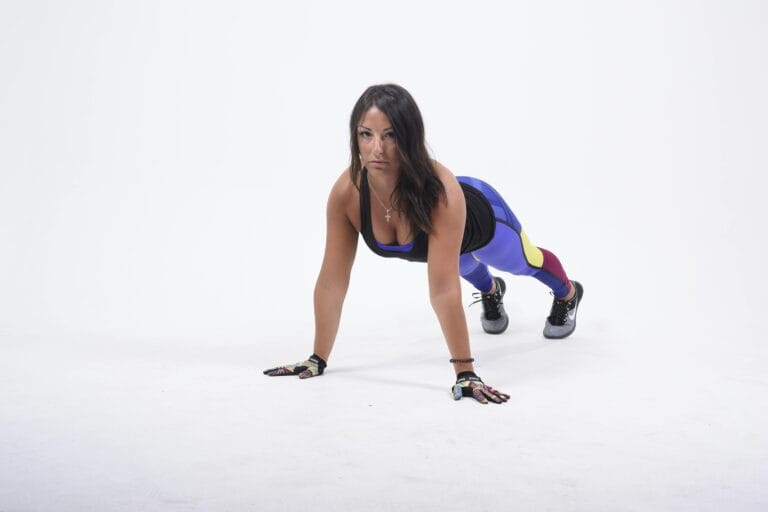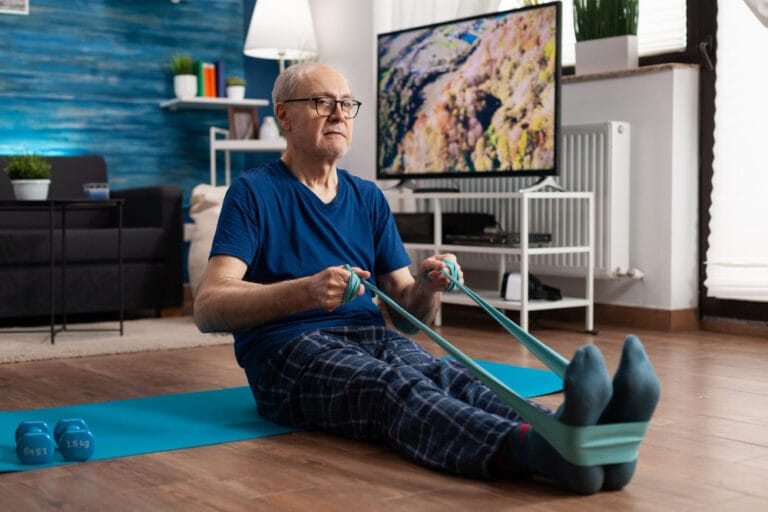FREE SHIPPING OVER $50
Engineer Your Core: The Science-Backed Plan for Next-Level Ab Strength & Stability

You’ve probably done your fair share of crunches, sit-ups, and planks. Maybe you’ve even chased that elusive six-pack. But what if we told you there’s a whole other dimension to core strength – one that goes far beyond aesthetics and truly transforms your fitness and overall well-being? It’s about “engineering” your core, building next-level ab strength & stability using proven, science-backed principles.
Forget simply doing endless reps of the same old exercises. To truly unlock a powerhouse core, you need a smarter, more strategic approach. This isn’t just about looking good; it’s about building a robust, injury-proof foundation that enhances every movement you make, whether you’re lifting heavy weights, playing sports, or simply bending down to pick up groceries.
The Science Behind a Superior Core
To build a truly next-level core, we need to understand how these muscles actually work. The conventional wisdom often misses some crucial scientific principles:
- Anti-Movement Training is Key: Your core’s most vital job is to resist unwanted movement. This includes resisting:
- Anti-Extension: Preventing your lower back from arching (e.g., in a plank).
- Anti-Rotation: Preventing your torso from twisting (e.g., when carrying a heavy bag on one side).
- Anti-Lateral Flexion: Preventing your torso from bending sideways (e.g., when holding a suitcase in one hand).
- Anti-Flexion: Preventing your spine from rounding (e.g., during heavy lifts). These anti-movements are the foundation of true core stability.
- Progressive Overload is Non-Negotiable: Just like any other muscle, your core muscles need to be consistently challenged to grow stronger and more stable. This means gradually increasing the difficulty of exercises through longer holds, more repetitions, adding external weight, or reducing your base of support.
- Mind-Muscle Connection is Crucial: You need to actively feel and engage the right core muscles. This isn’t just about going through the motions; it’s about intentional activation.
- Breathing and Bracing: Proper breathing techniques, specifically diaphragmatic breathing and creating intra-abdominal pressure (bracing your core as if bracing for a punch), are fundamental for spinal stability and power transfer.
- Full Body Integration: Your core doesn’t work in isolation. The most effective core exercises often involve movements that integrate your core with your limbs, mimicking real-life movements.
By focusing on these principles, you move beyond superficial abdominal training and begin to truly engineer your core from the inside out.
Engineer Your Core: The Science-Backed Plan (Key Principles & Exercises)
This workout plan focuses on building core strength & stability by targeting the core’s primary functions. Aim to incorporate 2-3 of these types of exercises into your routine 2-3 times per week, allowing for rest days in between. Perform 3-4 sets of 8-12 repetitions or holds as specified, focusing on perfect form over speed.
1. Master Anti-Extension: Build a Bulletproof Midsection
These exercises challenge your ability to prevent your lower back from arching, which is crucial for protecting your spine and improving posture.
- The Science: Exercises like ab rollouts primarily engage your rectus abdominis (the “six-pack” muscle) and transverse abdominis (deepest core muscle) to resist lumbar hyperextension. This strengthens the anterior core’s ability to maintain a neutral spine.
- Exercise Example: Ab Rollout (Wheel or Dumbbell)
- Kneel on the floor with an ab wheel or a pair of dumbbells (on their ends) in front of you.
- Brace your core tight, imagine pulling your belly button towards your spine.
- Slowly roll the wheel or dumbbells forward, extending your body until you feel a strong stretch in your abs, keeping your back straight (no arching!).
- Use your core and lats to pull yourself back to the starting position with control.
- Progression: Roll out further, use a stability ball for less support, or perform from your feet if advanced.
2. Conquer Anti-Rotation: Forge Spinal Stability
Many injuries occur during rotational movements. These exercises train your core to resist unwanted twisting, protecting your spine.
- The Science: Anti-rotation exercises primarily target your obliques and transverse abdominis, forcing them to work synergistically to prevent unwanted rotation of your torso. This builds crucial rotational stability, essential for everything from throwing a ball to simply turning around.
- Exercise Example: Pallof Press (Standing or Kneeling)
- Attach a D-handle to a cable machine at chest height (or use a resistance band anchored to a sturdy post).
- Stand or kneel sideways to the anchor point, grabbing the handle with both hands.
- Press the handle straight out in front of your chest, resisting the urge for your torso to rotate towards the anchor.
- Hold for a count, then slowly return. Repeat on both sides.
- Progression: Increase resistance, or move further away from the anchor point.
3. Build Anti-Lateral Flexion: Strengthen Your Sides
These movements challenge your core’s ability to prevent your torso from bending sideways, vital for carrying uneven loads and maintaining balance.
- The Science: Anti-lateral flexion exercises engage the obliques, quadratus lumborum, and other deep spinal stabilizers. This trains your core to maintain a neutral spine in the frontal plane, improving balance and reducing strain when performing asymmetrical tasks.
- Exercise Example: Suitcase Carry
- Stand tall, holding a heavy dumbbell or kettlebell in one hand by your side.
- Keep your shoulders back and down, core braced, and resist the urge to lean towards the side holding the weight.
- Walk a set distance (e.g., 50-100 feet) maintaining perfect posture. Switch hands and walk back.
- Progression: Increase weight or distance.
4. Integrate Compound Lifts with Core Bracing: Functional Power
True next-level core strength shines brightest when integrated into big, multi-joint movements. Your core acts as the transfer station for power.
- The Science: During compound lifts like deadlifts and squats, your core creates a rigid cylinder (intra-abdominal pressure) that stabilizes your spine, allowing your limbs to exert maximum force efficiently and safely. This builds practical, functional strength.
- Exercise Example: Deadlifts (or Squats)
- Stand with your feet hip-width apart, shins close to a loaded barbell (or hold heavy dumbbells).
- Hinge at your hips, keeping a flat back, and grip the bar.
- Take a deep breath, brace your core (imagine someone’s about to punch you in the gut), and lift the weight by driving through your heels and extending your hips and knees simultaneously.
- Lower with control, maintaining your braced core.
- Note: Focus intensely on maintaining a rigid spine throughout the movement.
5. Incorporate Rotational Power (Controlled): Dynamic Core Engagement
While anti-rotation prevents unwanted twists, controlled, powerful rotation is essential for many sports and dynamic movements.
- The Science: Exercises involving controlled rotation engage the obliques and other core muscles to produce twisting force efficiently, rather than just resisting it. This improves athletic performance and real-world movement patterns.
- Exercise Example: Medicine Ball Slams (Rotational)
- Stand with feet shoulder-width apart, holding a medicine ball.
- Rotate your torso to one side as you bring the ball up and across your body.
- Slam the ball down towards the floor powerfully on the opposite side, engaging your obliques and core.
- Retrieve the ball and repeat, alternating sides.
- Progression: Increase ball weight or speed.
6. Focus on Core Endurance: Sustain That Stability
It’s not just about how much force your core can generate, but how long it can maintain stability, especially during prolonged activities.
- The Science: Training core endurance helps your muscles resist fatigue, maintaining good posture and spinal protection over extended periods. This is vital for long workouts, sitting at a desk, or preventing cumulative stress injuries.
- Exercise Example: Long-Lever Plank
- Start in a standard plank position on your forearms.
- Slowly walk your elbows further and further out in front of you, increasing the lever arm.
- Maintain a perfectly straight line from head to heels, resisting any sagging in the hips or arching in the lower back.
- Hold for a specific time (e.g., 30-60 seconds).
- Progression: Increase hold time, add a weight plate on your lower back (carefully), or perform single-arm or single-leg variations.
Designing Your Core Engineering Program
To truly engineer your core, integrate these principles into your workout plan:
- Frequency: Aim for 2-3 dedicated core sessions per week, or incorporate 1-2 exercises into your full-body workouts.
- Structure: You can do them as a circuit (moving from one exercise to the next with minimal rest), or as straight sets (completing all sets of one exercise before moving to the next).
- Progression: As you get stronger, challenge yourself! Increase the weight, extend hold times, perform more reps, or try more advanced variations of the exercises.
- Mind-Muscle Connection: For every rep or hold, consciously think about bracing your core and activating the correct muscles. It’s about quality, not just quantity.
- Breathing: Always remember to brace your core with your breath during challenging movements.
Final Thoughts
Stop settling for basic core work. By applying these science-backed principles and integrating these specific exercises into your fitness routine, you can truly engineer your core for next-level ab strength & stability. This isn’t just about sculpting a six-pack; it’s about building a resilient, powerful, and functional foundation that will serve you well in every aspect of your life, from the gym to your daily movements. Get ready to feel stronger, move better, and unlock your full physical potential!
Related Articles
- Torch Fat at Home: 6 Dumbbell Moves That SMASH Spin Class for Faster Results
- Live Longer, Ditch the Treadmill? Science Reveals the True Longevity Exercise (It’s Not Cardio!)
- Researchers Uncover the #1 Strength Training Method for Older Adults to Build Muscle & Boost Energy!
- Knee Pain? NOT Anymore! 15 Gentle Workouts That Torch Calories & Protect Your Joints
- Age Reversal Workout: This “Slow-Mo” Method Builds Strength & Fights Muscle Loss (Even at 70+!)







